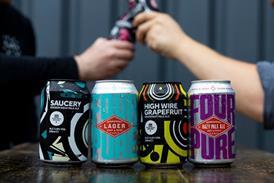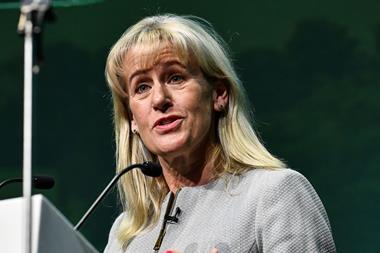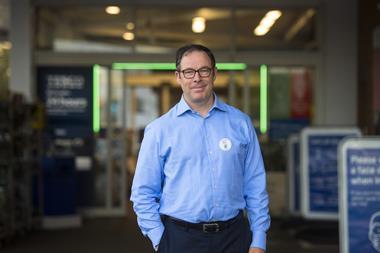Honey-roasted ham is as much a part of Christmas as turkey and sprouts. Come this December, however, there will be one major difference from Christmases past: the honey won’t be English.
Due to a drastic decline in global bee populations over the past few years, The Honey Association predicted last month that English honey would run out by Christmas – and won’t return to store shelves until next summer.
And the disappearance of English honey may only be the tip of the iceberg.
“Without bees there would be no jam, no honey, no fruit and very few vegetables,” says British Beekeepers’ Association president Tim Lovett, starkly. “Our diet would be considerably less interesting, and the government could forget all about its 5-a-day.”
Bees are responsible for pollinating either directly or indirectly a third of the food that we eat. As well as major fruit crops, which depend on pollination from honey bees to a greater or lesser extent (see boxout), runner beans are 40%-reliant, and oilseed rape, field beans and broad beans are all also partially reliant.
There’s also the indirect impact to consider. Production of alfalfa, an important cattle feed, for instance, is heavily reliant on bees, meaning beef and dairy supplies would suffer. Sunflower seeds are 70%-reliant, so snack manufacturers such as Walkers who now use sunflower oil for frying, would also be hit.
Without them, the contents of our shopping baskets could look very different, very soon. So how bad is the problem? Who’s to blame? And what is being done to address it?
It’s difficult to overplay the gravity of the situation. Defra estimates that bees contribute £165m to the UK economy through their pollinating activities. The true sum is probably far higher, as the estimate was based on just 10 crops, while bees are believed to be involved in the pollination or propagated seed production of more than 70. Bumblebees, for example, are crucial to the pollination of runner beans, tomatoes, peppers and cucumbers, though these were not included in the study.
The cause is easily identified. It’s now widely accepted that modern farming methods have stripped the land of the natural sources of pollen and nectar. Over the past 30 years the British bumblebee population has fallen by a shocking 70% as the hedgerows they depend upon have disappeared.
With the added depletion of honey bee colonies through viruses, mites, fungi, pesticides and even stress, there are now thought to be no wild colonies left in the UK. And to add insult to injury, 30% of keeper-maintained hives were lost last winter to the little-understood Colony Collapse Disorder, a survey of 1,000 British Beekeepers’ Association members revealed – double the percentage of the year before.
The shortfall can’t be made up with imports, either, because the threat to the bee population is a global one. In Sichuan, China, a major pear-producing area, nearly all the pear trees are already being hand-pollinated, which is a massively labour-intensive process. “If people were to take over from bees in the UK, it would require a workforce of 30 million,” says Lovett.
What’s to be done? The only long-term solution is to revive bee populations on a global scale.
National governments are being lobbied for much-needed funding into research, and in some cases it is being granted. In June for instance, the US government approved $10m to research bees and a further $780,000 to look into CCD.
Food manufacturers have been getting in on the act as well. Acutely aware that 40% of its flavours depend on bee pollination, Häagen-Dazs in the US put $250,000 towards research into CCD earlier this year. “If there is no breakthrough the company could have to re-examine the flavours we offer our customers,” warns a Häagen-Dazs spokesperson.
In the UK, Defra is currently running a consultation on the sustainability of honey bees, the results of which will be disclosed in the autumn. It has also funded recent studies by the University of Warwick on CCD.But Stuart Bailey, chairman of Rowse Honey, which is ploughing £25,000 into research over the next 12 months, believes a more co-ordinated approach is required. “We have organised a meeting with the NFU, BBKA and the Bee Farmers’ Association at the end of the month,” he says.
“The aim is to make sure our various activities are aligned in the pursuit of funding for research. The honey bee crisis is an international issue and needs governments to engage in a joint plan.”
Yet while the honeybee problem is complex, the plight of the bumblebee can be helped simply and cheaply through the planting of wild flowers. That’s why last year Sainsbury’s launched Operation Bumblebee with agri-business Syngenta. To encourage shoppers to do their bit for bees, in one initiative the supermarket gave away 4,000 packets and sold a further 8,000 packets of wild flower seed mix to plant in gardens.
Arguably a more important initiative of Operation Bumblebee, however, was a move to engage 150 of Sainsbury’s suppliers in growing the bumblebee mix on their land. As part of the deal, each supplier must set aside at least 2.5 acres of land to develop a haven of wild flowers for bumblebees to thrive on. “We want to do something before this situation gets really bad,” says Sainsbury’s agronomist Debbie Winstanley. “We are trying to develop long-term, sustainable relationships with our suppliers, and [we find] farmers who are keen to do this sort of thing are often keen to help in other ways too,” she adds.
These actions are having an impact. Since planting the mix on its farms, salad packer Vitacress has reported sightings of a rare bumblebee species that hadn’t been seen for 50 years.
And although Sainsbury’s tie-up with Syngenta is due to end in spring 2010, Geoff Coates, agri-environmental manager for Syngenta UK, is confident farmers are committed for the long term, and won’t return the land to cropping.
“Those who get involved really enjoy it, and many from the pilot scheme several years ago are still re-sowing the mix every year,” he says. “Plus, this can help farmers qualify for rewards under Defra’s agri-environmental schemes.”
In the meantime, Sainsbury’s will be giving away more packets of the bumblebee mix next spring. Ben Darvill, director at The Bumblebee Conservation Trust, thinks even small gestures such as this are beneficial.
“Bumblebees are in catastrophic decline due to habitat loss, so any extra forage will help,” he says. “People need to provide it throughout the year, as consistency of supply is crucial to bumblebee survival.”
Of course, bumblebees form just one half of the pollinator equation. BBKA’s Lovett would also like to see supermarkets assisting the cause with the setting up of a honey bee forum. “It could help with our tasks as an educational charity in training the next generation of beekeepers, because without good beekeepers there will be no honey bees either.”
Awareness is growing. Willingness to tackle the bee crisis is gathering pace. Now farmers, suppliers, retailers and the government must forge closer links, in the UK and on an international scale, planning together to ensure it isn’t a case of too little too late for the humble but hugely important bumble. n
Due to a drastic decline in global bee populations over the past few years, The Honey Association predicted last month that English honey would run out by Christmas – and won’t return to store shelves until next summer.
And the disappearance of English honey may only be the tip of the iceberg.
“Without bees there would be no jam, no honey, no fruit and very few vegetables,” says British Beekeepers’ Association president Tim Lovett, starkly. “Our diet would be considerably less interesting, and the government could forget all about its 5-a-day.”
Bees are responsible for pollinating either directly or indirectly a third of the food that we eat. As well as major fruit crops, which depend on pollination from honey bees to a greater or lesser extent (see boxout), runner beans are 40%-reliant, and oilseed rape, field beans and broad beans are all also partially reliant.
There’s also the indirect impact to consider. Production of alfalfa, an important cattle feed, for instance, is heavily reliant on bees, meaning beef and dairy supplies would suffer. Sunflower seeds are 70%-reliant, so snack manufacturers such as Walkers who now use sunflower oil for frying, would also be hit.
Without them, the contents of our shopping baskets could look very different, very soon. So how bad is the problem? Who’s to blame? And what is being done to address it?
It’s difficult to overplay the gravity of the situation. Defra estimates that bees contribute £165m to the UK economy through their pollinating activities. The true sum is probably far higher, as the estimate was based on just 10 crops, while bees are believed to be involved in the pollination or propagated seed production of more than 70. Bumblebees, for example, are crucial to the pollination of runner beans, tomatoes, peppers and cucumbers, though these were not included in the study.
The cause is easily identified. It’s now widely accepted that modern farming methods have stripped the land of the natural sources of pollen and nectar. Over the past 30 years the British bumblebee population has fallen by a shocking 70% as the hedgerows they depend upon have disappeared.
With the added depletion of honey bee colonies through viruses, mites, fungi, pesticides and even stress, there are now thought to be no wild colonies left in the UK. And to add insult to injury, 30% of keeper-maintained hives were lost last winter to the little-understood Colony Collapse Disorder, a survey of 1,000 British Beekeepers’ Association members revealed – double the percentage of the year before.
The shortfall can’t be made up with imports, either, because the threat to the bee population is a global one. In Sichuan, China, a major pear-producing area, nearly all the pear trees are already being hand-pollinated, which is a massively labour-intensive process. “If people were to take over from bees in the UK, it would require a workforce of 30 million,” says Lovett.
What’s to be done? The only long-term solution is to revive bee populations on a global scale.
National governments are being lobbied for much-needed funding into research, and in some cases it is being granted. In June for instance, the US government approved $10m to research bees and a further $780,000 to look into CCD.
Food manufacturers have been getting in on the act as well. Acutely aware that 40% of its flavours depend on bee pollination, Häagen-Dazs in the US put $250,000 towards research into CCD earlier this year. “If there is no breakthrough the company could have to re-examine the flavours we offer our customers,” warns a Häagen-Dazs spokesperson.
In the UK, Defra is currently running a consultation on the sustainability of honey bees, the results of which will be disclosed in the autumn. It has also funded recent studies by the University of Warwick on CCD.But Stuart Bailey, chairman of Rowse Honey, which is ploughing £25,000 into research over the next 12 months, believes a more co-ordinated approach is required. “We have organised a meeting with the NFU, BBKA and the Bee Farmers’ Association at the end of the month,” he says.
“The aim is to make sure our various activities are aligned in the pursuit of funding for research. The honey bee crisis is an international issue and needs governments to engage in a joint plan.”
Yet while the honeybee problem is complex, the plight of the bumblebee can be helped simply and cheaply through the planting of wild flowers. That’s why last year Sainsbury’s launched Operation Bumblebee with agri-business Syngenta. To encourage shoppers to do their bit for bees, in one initiative the supermarket gave away 4,000 packets and sold a further 8,000 packets of wild flower seed mix to plant in gardens.
Arguably a more important initiative of Operation Bumblebee, however, was a move to engage 150 of Sainsbury’s suppliers in growing the bumblebee mix on their land. As part of the deal, each supplier must set aside at least 2.5 acres of land to develop a haven of wild flowers for bumblebees to thrive on. “We want to do something before this situation gets really bad,” says Sainsbury’s agronomist Debbie Winstanley. “We are trying to develop long-term, sustainable relationships with our suppliers, and [we find] farmers who are keen to do this sort of thing are often keen to help in other ways too,” she adds.
These actions are having an impact. Since planting the mix on its farms, salad packer Vitacress has reported sightings of a rare bumblebee species that hadn’t been seen for 50 years.
And although Sainsbury’s tie-up with Syngenta is due to end in spring 2010, Geoff Coates, agri-environmental manager for Syngenta UK, is confident farmers are committed for the long term, and won’t return the land to cropping.
“Those who get involved really enjoy it, and many from the pilot scheme several years ago are still re-sowing the mix every year,” he says. “Plus, this can help farmers qualify for rewards under Defra’s agri-environmental schemes.”
In the meantime, Sainsbury’s will be giving away more packets of the bumblebee mix next spring. Ben Darvill, director at The Bumblebee Conservation Trust, thinks even small gestures such as this are beneficial.
“Bumblebees are in catastrophic decline due to habitat loss, so any extra forage will help,” he says. “People need to provide it throughout the year, as consistency of supply is crucial to bumblebee survival.”
Of course, bumblebees form just one half of the pollinator equation. BBKA’s Lovett would also like to see supermarkets assisting the cause with the setting up of a honey bee forum. “It could help with our tasks as an educational charity in training the next generation of beekeepers, because without good beekeepers there will be no honey bees either.”
Awareness is growing. Willingness to tackle the bee crisis is gathering pace. Now farmers, suppliers, retailers and the government must forge closer links, in the UK and on an international scale, planning together to ensure it isn’t a case of too little too late for the humble but hugely important bumble. n














No comments yet